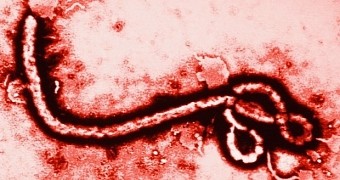Just the other day, a team of scientists published a study explaining how the deadly Ebola virus can survive for up to nine months in sperm. Then along came medical researchers with the US Army who released another paper detailing the world's first case of sexually transmitted Ebola.
So, there you have it, Ebola is now officially a sexually transmitted disease. Admittedly, this means of transmission is not a common occurrence - just the one case described by US Army specialists has so far been documented - but it can happen, and now health officials have some very delicate guidelines amending to tend to.
How Ebola was confirmed to be an STD
The US Army medical experts who identified and recorded the first known case of sexually transmitted Ebola published their study detailing this occurrence in the New England Journal of Medicine.
The incident involved a woman who was diagnosed with the deadly disease earlier this year, in March. At first, the doctors who treated her looked for obvious infection sources, such as contact with an Ebola patient in an advanced stage of the disease.
When they couldn't figure out how and when she had been exposed to the virus, they further questioned the patient and learned that, prior to falling ill, she had been intimate with an Ebola survivor.
The man had been declared healthy back in October 2014, months before the woman got sick. All the same, when the research team tested his sperm, they discovered traces of the deadly virus.
The genetic profile of the Ebola virus retrieved from the woman's partner was shown to bear a striking resemblance to the strain making her sick. Hence, the specialists concluded that the woman had been infected via unprotected intimate relations.
“Ebola virus genomes assembled from the patient's blood and the survivor's semen were consistent with direct transmission,” said scientist Jason Ladner with the US Army Medical Research Institute of Infectious Diseases in an interview.
What this discovery means for public health
This latest Ebola outbreak in West Africa debuted in December 2013, when a handful of cases were confirmed in Guinea. Then, the disease spread to Liberia, Nigeria and Sierra Leone. Soon enough, isolated cases happened in Europe, the US, and other regions across the globe.
Latest counts put the number of infected people at over 15,000. As for the number of victims, it's surpassed 11,000. While the virus is no longer spreading and infecting new people quite as fast as it used to, the fact of the matter is new cases are still popping up. So, the outbreak is not exactly over.
Now that the disease has been confirmed to be sexually transmissible, health officials must amend existing guidelines and counsel survivors to make sure that they do not inadvertently pass on the virus once they are cleared and released from hospital.
As mentioned, sexual transmission of Ebola is extremely rare. However, this doesn't mean it's not something to worry about, not when it can cause flare-ups in regions supposedly Ebola-free.
True, not all Ebola survivors are necessarily contagious. Still, it only takes one to once again fuel the outbreak. After all, when the virus started spreading in late 2013, there was but one patient zero. From this one patient, thousands were eventually infected.
To keep this from happening again, more needs be done than simply put people diagnosed with the disease in isolation and monitor those who came into contact with them while contagious.
Ebola survivors, and especially men, need to be monitored for at least nine months after having been declared healthy, during which time they should either refrain from being intimate or at least wear protection. Otherwise, we risk going back to where we started.
Interestingly, it's not just in semen that Ebola can survive for months at a time. It can also persist in the central nervous system or placenta. In the case of a 43-year-old man, it survived in his eye without anyone noticing and turned it from blue to green.

 14 DAY TRIAL //
14 DAY TRIAL //